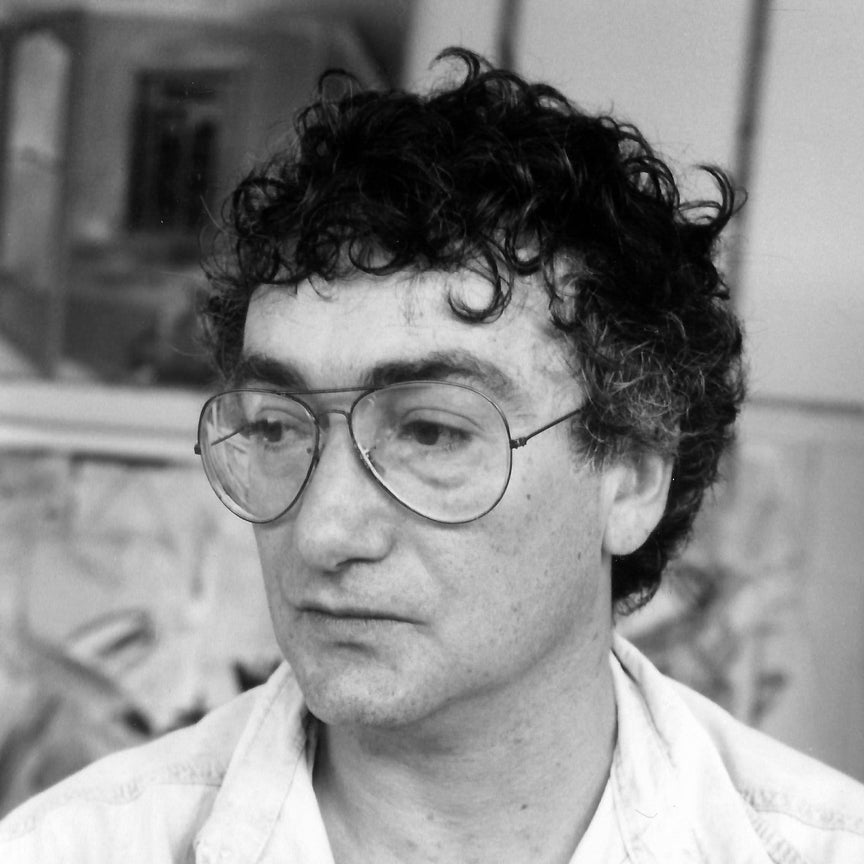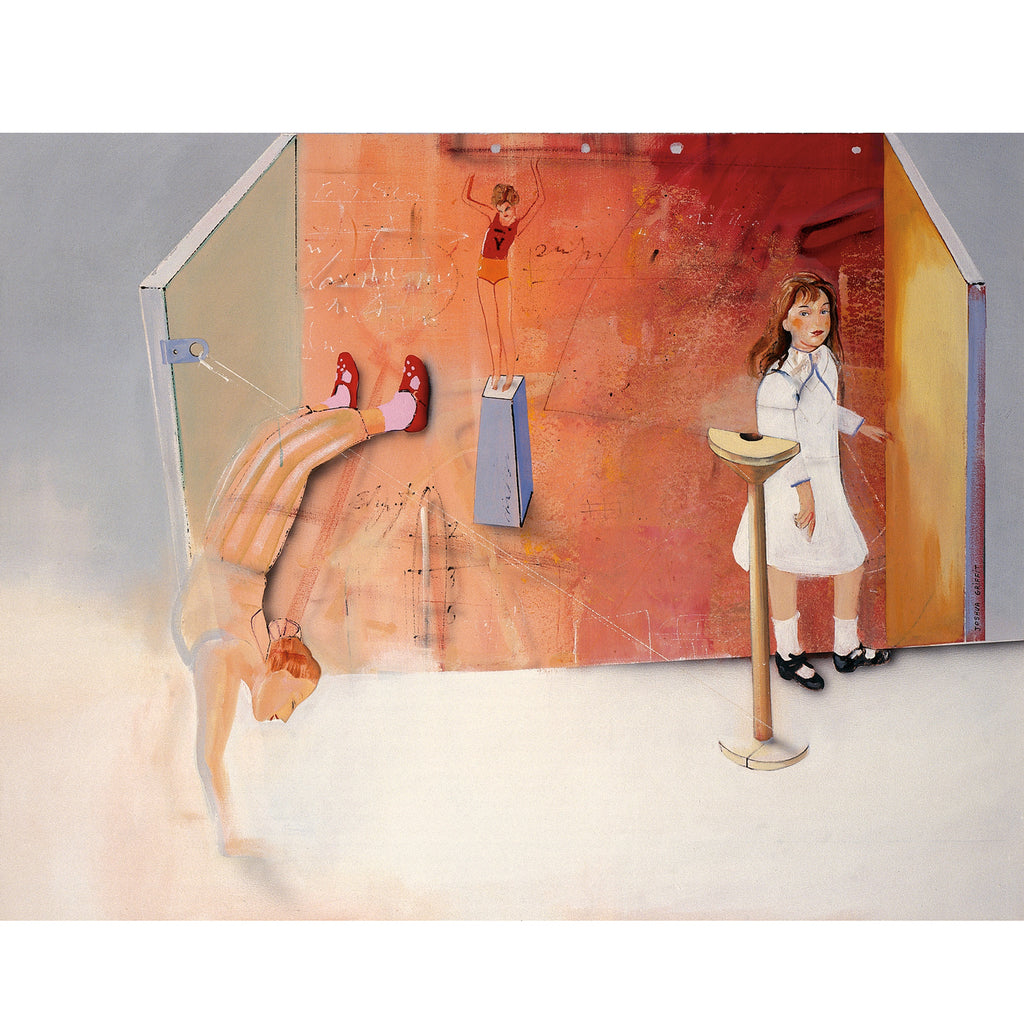92'-99' | Griffit Style
In 1992 at the Tefen Open Museum, the poet Natan Zach curated a kind of retrospective of Griffit's paintings. Opening remarks were delivered by, inter alia, the late Mani Pe’er and Natan Zach, who, in the spirit of the postmodern period in the art world, declared that Griffit was the most postmodernist artist that he knew. In the catalog, he wrote, “He deals with a dream - and an erotic dream - but de-mystifies it. From this perspective, he is a ‘dreamer who spoils dreams.’ That is why his painting speaks simultaneously to two types of audiences, and perhaps to two polar opposites with regards to their expectations…But there is also a third possibility. You can certainly experience “the” and live “with” with the same ambiguity that lies at the foundation of this painting” (Following the Lost Magic).
In this regard, in 1995 Gideon Ofrat added in the catalog of Griffit’s solo exhibition at the Arad Museum, “In other words: Griffit's paintings affirm modernism (the expropriation of art from life) and postmodernism (the swallowing up of the materials of life in the artistic simulation) at one and the same time. As befits an artist whose artistic growth began in the late sixties, at the height of the modernist impaction on the local scene, and found himself flung into the postmodern spoof ery of the eighties.” Ofrat also drew a connecting line from the 1990s paintings to the etchings from the 1970s: “In the nineties Griffit is faithful to the post-collagistic compositions that began with the etchings, even if he does evince more freedom and more virtuosity…there is no avoiding the admission of an identical infrastructure both then and now. For it seems that Griffit is only covering up those early anxieties with his new sarcastic show.” (Acrobatics Above the Chaos).
In an article that came out before Griffit's second solo exhibition at the Herzliya Museum, Yoav Dagon was quoted as saying, “Shuki Griffit represents a movement that has not caught on so much in Israel-American realism. The establishment does not recognize a large number of artists in Israel. This is a problem for many artists from different streams and it is a special problem for realism.” Griffit expressed his awareness of the situation in an interview with Josef Mundy: “The establishment is provincial. In the 1970s, conceptual art was dominant here. In the 1980s it was German expressionism. I think the art establishment is very Bolshevik, and it decides what official art is. That is also the reason why an artist like me will always be an outsider.”
In 1999, Meir Ahronson curated another retrospective for Griffit at the Ramat Gan Museum. In the exhibition catalog, Adam Baruch addressed the establishment’s problem with placing Griffit: “When you look through the Griffit file in the media archives of Israeli art, the findings are slim - very little attention is given to Griffit, to Griffit types. And to tell the truth, the Griffit type is not on the agenda of 'managed' Israeli art (that is, displayed, collected, distributed)... Joshua Griffit is quite alone in the Israeli art community. He has no local precedent. He has no local inspiration. And he has no partners here. An Israeli without ‘the gang.’ No Tzuba (Zaritzky/Abramson), no akeda (Bezem/Kadishman), no encrypted ideology (Cohen-Gan/Zvi Goldstein), no politics (Ruth Schloss/David Riv), no acclimatization (Avraham Ofek/Jan Rauchwerger). What is there? Him. (Behind it all lies no great happiness).

